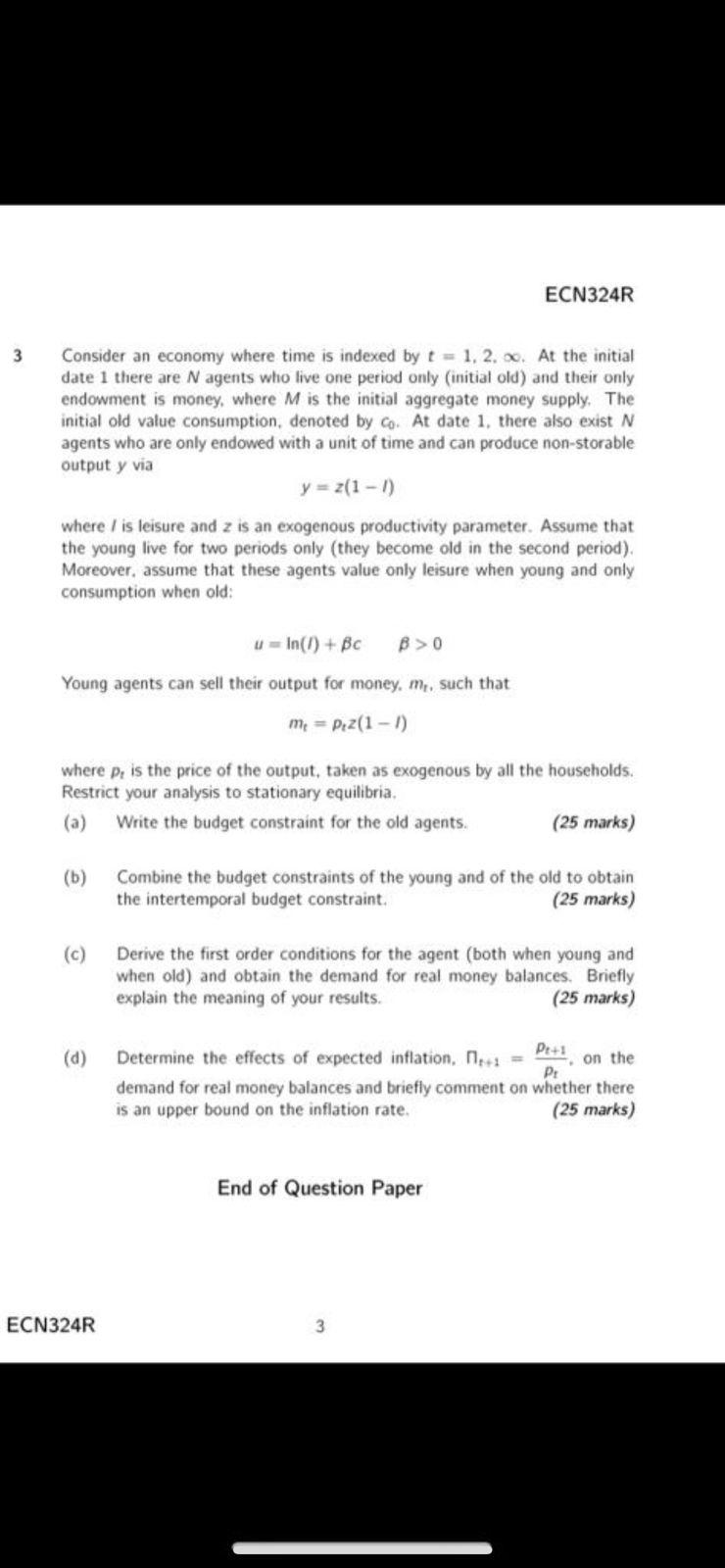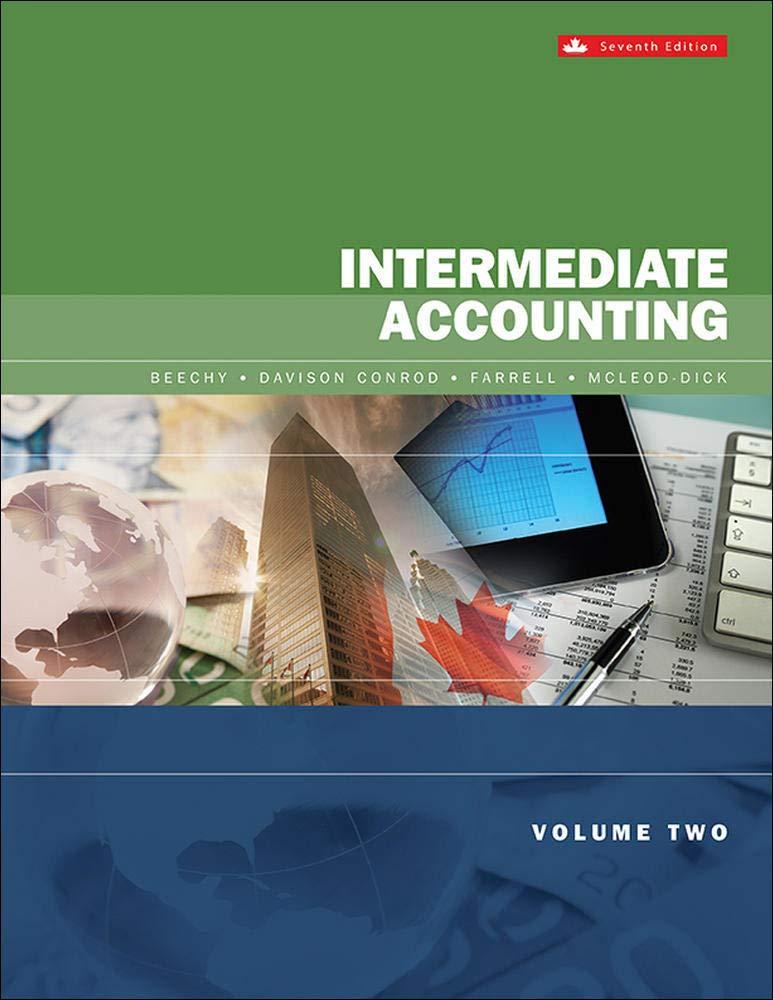URGENT
ECN324R 3 Consider an economy where time is indexed by t = 1.2. x. At the initial date 1 there are N agents who live one period only (initial old) and their only endowment is money, where M is the initial aggregate money supply. The initial old value consumption, denoted by Co. At date 1, there also exist N agents who are only endowed with a unit of time and can produce non-storable output y via y=(1-1) where I is leisure and z is an exogenous productivity parameter. Assume that the young live for two periods only (they become old in the second period). Moreover, assume that these agents value only leisure when young and only consumption when old: u = In(1) + BC B>0 Young agents can sell their output for money, me, such that me - Piz(1-1) where p, is the price of the output, taken as exogenous by all the households. Restrict your analysis to stationary equilibria. (a) Write the budget constraint for the old agents. (25 marks) (b) Combine the budget constraints of the young and of the old to obtain the intertemporal budget constraint. (25 marks) (c) Derive the first order conditions for the agent (both when young and when old) and obtain the demand for real money balances. Briefly explain the meaning of your results. (25 marks) (d) Determine the effects of expected inflation, no Pet on the PE demand for real money balances and briefly comment on whether there is an upper bound on the inflation rate. (25 marks) End of Question Paper ECN324R 3 ECN324R 3 Consider an economy where time is indexed by t = 1.2. x. At the initial date 1 there are N agents who live one period only (initial old) and their only endowment is money, where M is the initial aggregate money supply. The initial old value consumption, denoted by Co. At date 1, there also exist N agents who are only endowed with a unit of time and can produce non-storable output y via y=(1-1) where I is leisure and z is an exogenous productivity parameter. Assume that the young live for two periods only (they become old in the second period). Moreover, assume that these agents value only leisure when young and only consumption when old: u = In(1) + BC B>0 Young agents can sell their output for money, me, such that me - Piz(1-1) where p, is the price of the output, taken as exogenous by all the households. Restrict your analysis to stationary equilibria. (a) Write the budget constraint for the old agents. (25 marks) (b) Combine the budget constraints of the young and of the old to obtain the intertemporal budget constraint. (25 marks) (c) Derive the first order conditions for the agent (both when young and when old) and obtain the demand for real money balances. Briefly explain the meaning of your results. (25 marks) (d) Determine the effects of expected inflation, no Pet on the PE demand for real money balances and briefly comment on whether there is an upper bound on the inflation rate. (25 marks) End of Question Paper ECN324R 3







